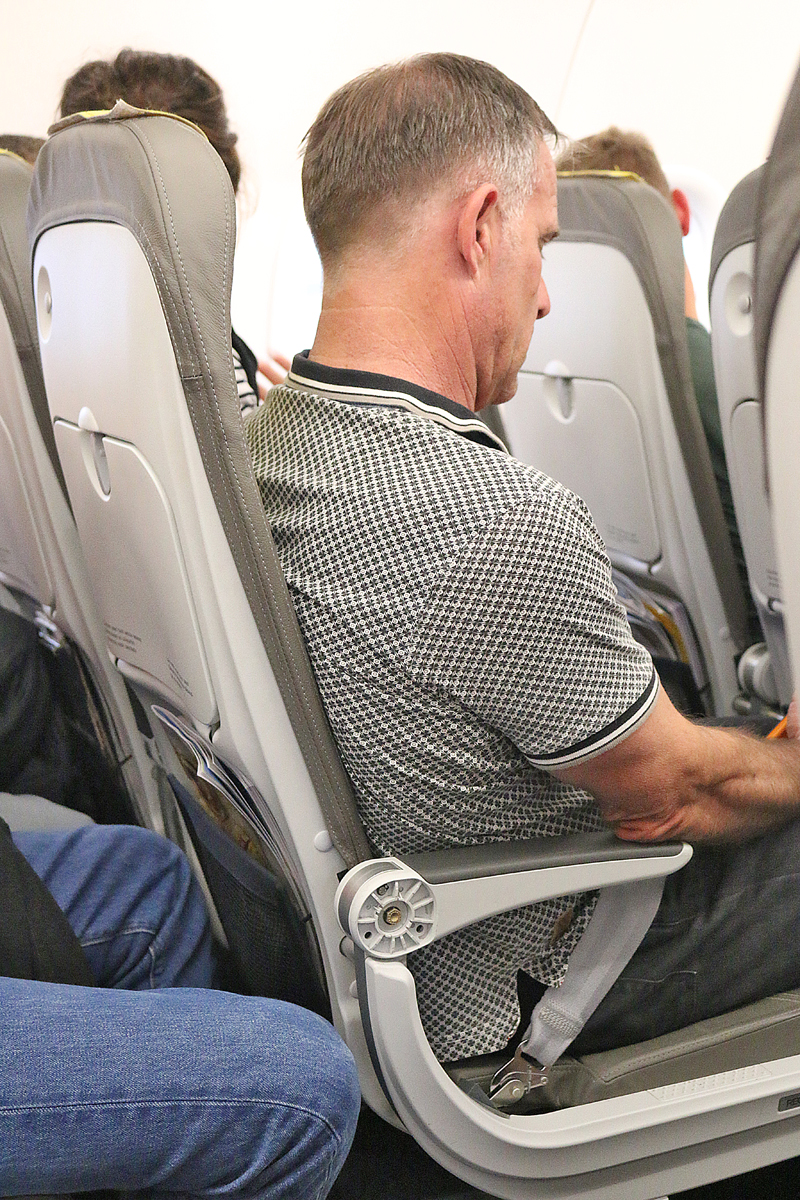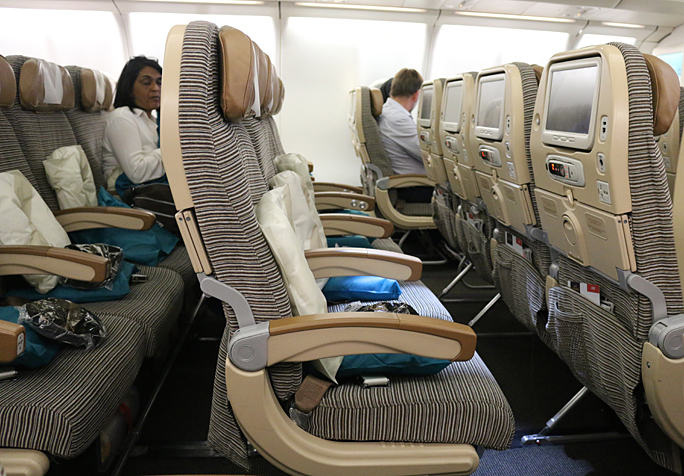Seat pitch, leg room, angle of recline and the width of seats found aboard airplanes are discussed ad nauseum in much of the media: how passengers are crammed like sardines so that airlines can enjoy more revenue by fitting additional people into the fixed space of an aircraft.
This Component Counts Towards Airplane Seat Comfort Also — But Few People Seem to Discuss It
Other than executives who work for an airline, finding people who will defend the comfort of a seat in the economy class cabin might very well be next to impossible — and while the aforementioned factors certainly do contribute to mitigating the comfort of a seat, one component is also arguably just as important…
…which is the reduction of the padding of the seat itself, as shown by the following three examples — although no measurements were taken.

This is a seat aboard a Boeing 757-200(G) airplane operated by Delta Air Lines when I traveled from New York to Reykjavik. Note how thick is the padding on this seat. I would not exactly call it a bastion — see what I did there? — of luxury; but it was reasonably comfortable.

The seat to which I was assigned aboard an airplane operated by United Airlines — of which I was a passenger back in 2016 for the first time in years — was located next to the window; and it appeared to be made out of leather. It also had an adjustable headrest.
I thought that the seat was somewhat reasonably comfortable — especially as the legroom was acceptably ample for me — but notice that this seat has less padding than the one of Delta Air Lines.

Traveling from Reykjavik to Barcelona was rather uncomfortable when I was a passenger for the first time aboard an Airbus A320 airplane operated by Vueling Airlines. Although the seat pitch of 29 inches and the seat width of 17.7 inches did not help matters — especially in terms of leg room — the lack of cushioning on what is essentially a seat with a flat back and not much in terms of support is what contributed most to the discomfort.
These seats were a half step — if that — above a park bench made out of wooden slats. No one should have to sit 4.5 hours in these seats, which were among the most uncomfortable seats in which I have ever sat aboard any airplane.

If seats in the economy class cabin aboard airplanes could be similar to the ones which used to be aboard airplanes operated by China Eastern Airlines in terms of padding and support — I sat in the one shown in the photograph above for 15 consecutive hours back in 2014 — that would go a long way towards returning comfort to passengers…

…or even like these seats aboard an airplane operated by Etihad Airways, in which I sat in 2015.
Summary
Seat width never meant all that much to me because I have never required a wide seat — although I do prefer the extra room whenever possible — but leg room and ample cushioning are paramount towards overall comfort, in my opinion…
…and yet, I do not see nearly as many articles written pertaining to the lack of cushioning of seats aboard some airplanes. After all, less cushioning means thinner seats — which means more seats can be crammed into an airplane and therefore more paying passengers means more revenue for the airline.
Fortunately, part of the FAA Reauthorization Act of 2018 — which is being implemented by the Federal Aviation Administration of the Department of Transportation of the United States — includes tests as to whether the evacuations of airplanes can be conducted safely in the unlikely event of an emergency, as legislators are reportedly concerned that seat configurations are too tight for passengers…
…especially as the obesity rate in the United States increased from 30.5 percent of the adult population in 1999-2000 to 39.8 percent in 2015-2016 — and affecting approximately 93.3 million of adults in the United States — according to data and statistics from the Centers for Disease Control and Prevention.
…but now I am asking which is most important to you in terms of seat comfort aboard an airplane: a wider seat, seat pitch, leg room, or ample cushioning — and why?
Please post your thoughts in the Comments section below. Thank you.
All photographs ©2015, ©2016 and ©2018 by Brian Cohen.
